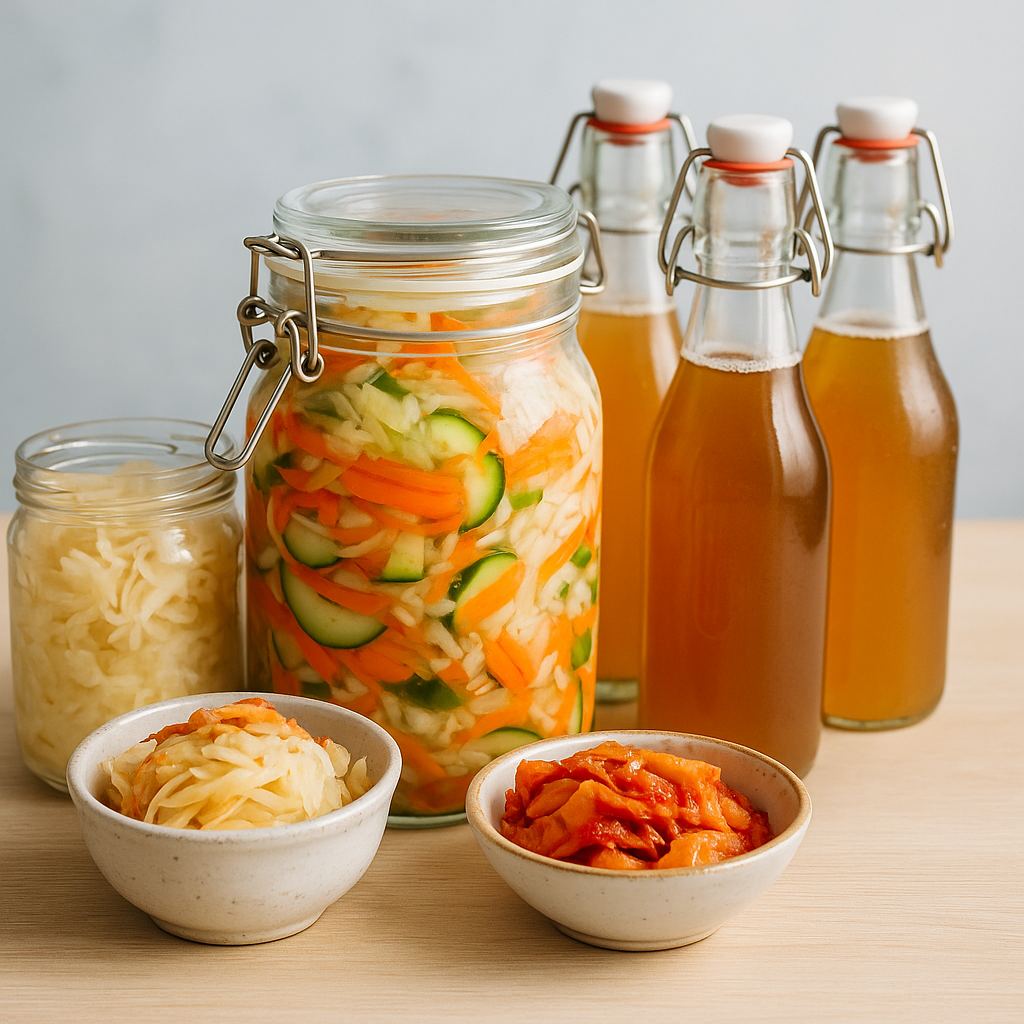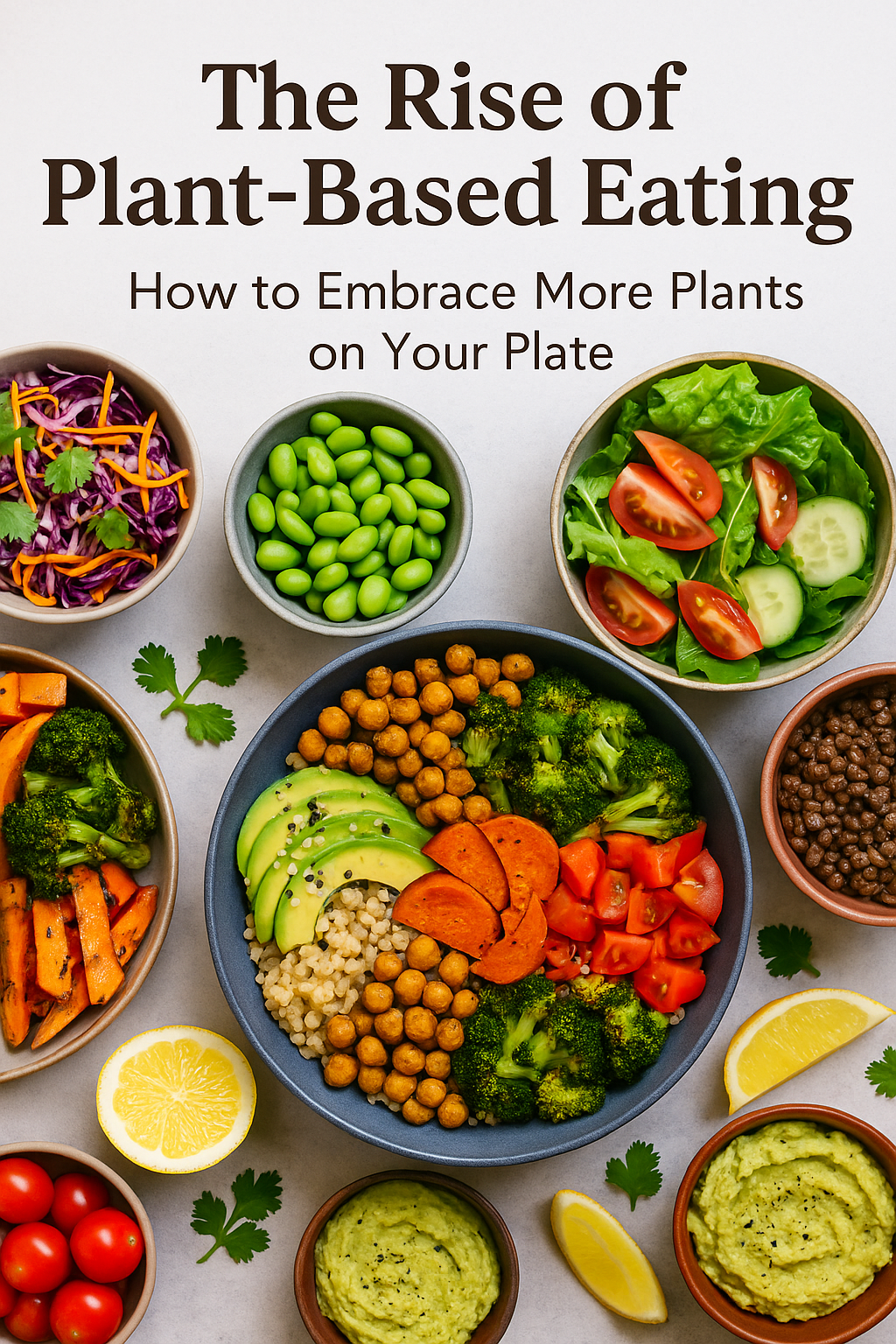
There’s a quiet revolution happening in kitchens around the world — one that’s bubbling, fizzing, and transforming how we think about food. It’s called fermentation, and while it’s one of the oldest methods of food preservation, it’s experiencing a massive renaissance in modern cuisine.
From kimchi to kombucha, sourdough to sauerkraut, fermentation is making its way from restaurant tasting menus into home kitchens. Why? Because it offers so much more than preservation — it enhances flavor, improves nutrition, supports gut health, and invites cooks to reconnect with ancient, natural processes.
Let’s explore why fermentation matters, what makes it so exciting, and how anyone — yes, even beginners — can bring this magic into their own kitchens.
What Is Fermentation?
Fermentation is a natural process where microorganisms (like bacteria, yeast, and mold) break down sugars and starches in food, producing byproducts such as acids, gases, or alcohol.
This process:
Preserves food without needing refrigeration
Enhances flavors — adding tang, umami, and complexity
Produces beneficial probiotics for gut health
Increases the bioavailability of vitamins and nutrients
You can ferment almost anything — vegetables, dairy, grains, beans, even meats and fish. And each type of fermentation (lactic acid, alcoholic, acetic acid, mold-based) produces different flavor profiles and benefits.
A Global Tradition
Fermentation is found in nearly every food culture on the planet:
Korea: Kimchi — spicy, sour fermented cabbage
Japan: Miso and soy sauce — fermented soybeans and grains
India: Dosas and idlis — fermented lentil and rice batters
Middle East: Yogurt and labneh — cultured dairy
Germany: Sauerkraut — tangy fermented cabbage
Mexico: Tepache — a fermented pineapple drink
Russia & Eastern Europe: Kvass and kefir — lightly fermented beverages
These aren’t trendy “health foods” — they’re age-old staples that have nourished generations.
Why Fermentation Is Booming Today
Gut Health Awareness
Modern science is catching up to what traditional cultures have long known: fermented foods are good for you. They’re rich in probiotics — beneficial bacteria that support digestion, immunity, and mental health.
Deeper Flavors
Fermentation unlocks flavors you can’t achieve through any other technique. The sourness of good kimchi, the rich umami of aged miso, the tang of a true sourdough — these are the hallmarks of fermentation.
Sustainability
Fermentation reduces food waste and promotes preservation without chemicals or energy-intensive refrigeration. It aligns beautifully with today’s eco-conscious values.
DIY Culture
More people are embracing homemade everything — bread, yogurt, pickles, kombucha — and fermentation fits perfectly into this hands-on movement.
Mindful Cooking
Fermentation is slow. It requires patience and attention. In a fast-paced world, it offers a mindful way to engage with food and tradition.
Health Benefits of Fermented Foods
The health benefits of incorporating fermented foods into your diet are wide-ranging:
Improved Digestion: Fermented foods help balance gut flora, aiding digestion and reducing bloating.
Enhanced Immunity: A healthy gut boosts your immune system’s ability to fight infection.
Better Nutrient Absorption: Fermentation increases the availability of B vitamins, vitamin K, and certain minerals.
Mental Health Support: The gut-brain connection means that probiotics may positively influence mood and cognition.
Reduced Inflammation: Regular consumption of fermented foods may help lower inflammation markers.
Easy Fermented Foods to Make at Home
If you’re new to fermentation, start simple. You don’t need fancy equipment or expensive ingredients. Here are some beginner-friendly projects:
Sauerkraut: Just cabbage and salt! Massage the salt into shredded cabbage, pack it into a jar, and let it ferment at room temperature for 1–4 weeks.
Yogurt: Heat milk, cool it slightly, stir in a bit of store-bought yogurt as a starter, and keep it warm for 6–12 hours.
Kombucha: Brew sweet tea, add a SCOBY (symbiotic culture of bacteria and yeast), and let it ferment for 7–10 days.
Sourdough Starter: Mix flour and water, feed daily — in a week you’ll have wild yeast ready to bake sourdough bread.
Pickled Vegetables: Radishes, carrots, cucumbers — ferment in a simple salt brine with herbs and spices.
Tips for Successful Fermentation
Start Clean: Use clean jars and utensils — not sterile, but no leftover soap or grease.
Use the Right Salt: Choose non-iodized salt (kosher, pickling, or sea salt) — iodine can inhibit fermentation.
Be Patient: Taste frequently — fermentation is a dynamic process. Let flavor guide you.
Control Temperature: Most ferments thrive around 65–75°F (18–24°C).
Don’t Fear the Bubbles: Effervescence is normal — embrace it!
The Joy of Fermentation
Fermentation is both science and art. No two batches are ever quite the same. It invites curiosity, experimentation, and connection — to food, to tradition, and to life itself.
There’s a profound satisfaction in tasting something you coaxed to life through natural processes. It transforms everyday ingredients into something extraordinary. And that experience connects us to ancient wisdom — when people didn’t have refrigeration or preservatives, but still preserved bounty and built flavors that nourished body and soul.
Final Thoughts
In our high-tech, convenience-driven food world, fermentation offers a refreshing return to slower, more intentional cooking. It invites us to trust in nature’s rhythms — to celebrate microbes instead of fearing them.
And it delivers unparalleled flavor and nutrition, while supporting a more sustainable way to eat.
So why not give it a try? Start with a jar of kraut or a simple sourdough. You might just find yourself hooked — and a whole new world of flavor and wellness will open up before you.



